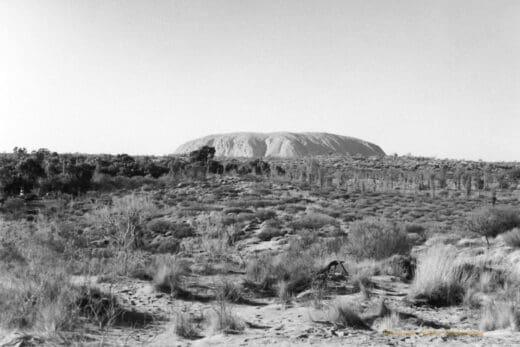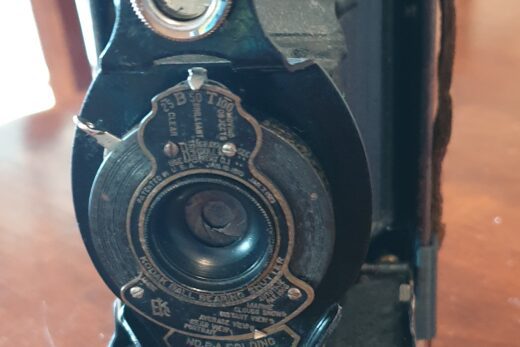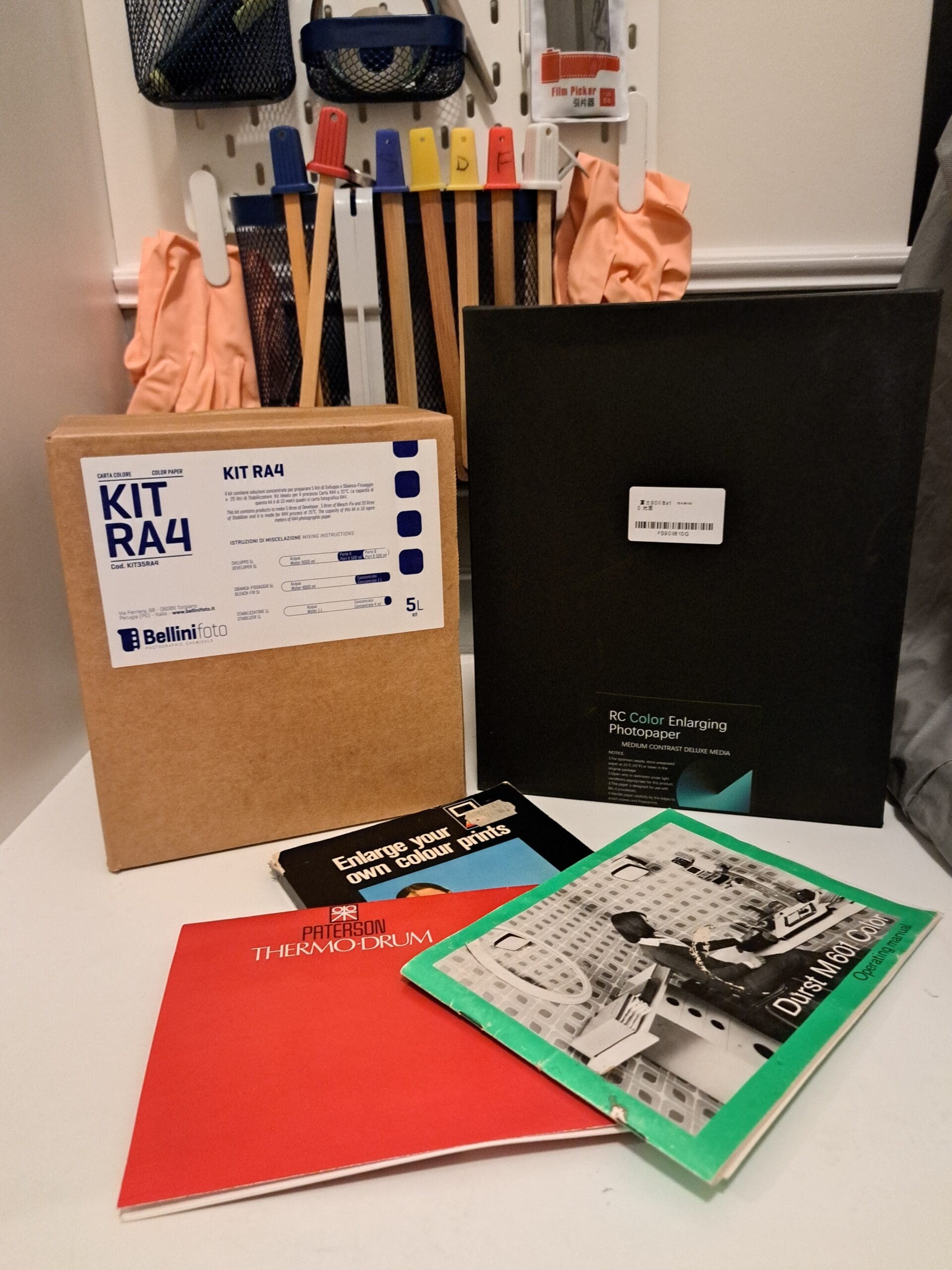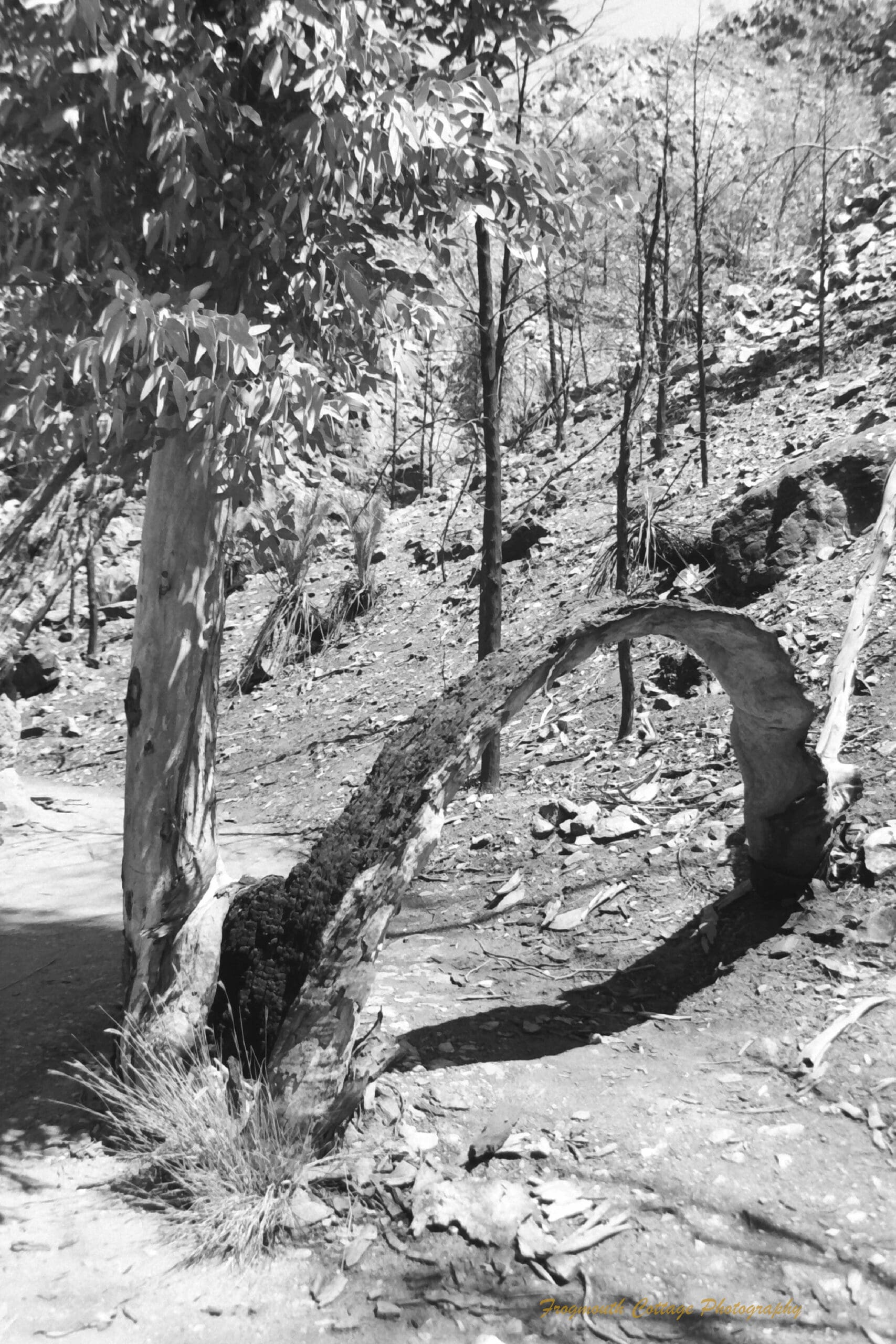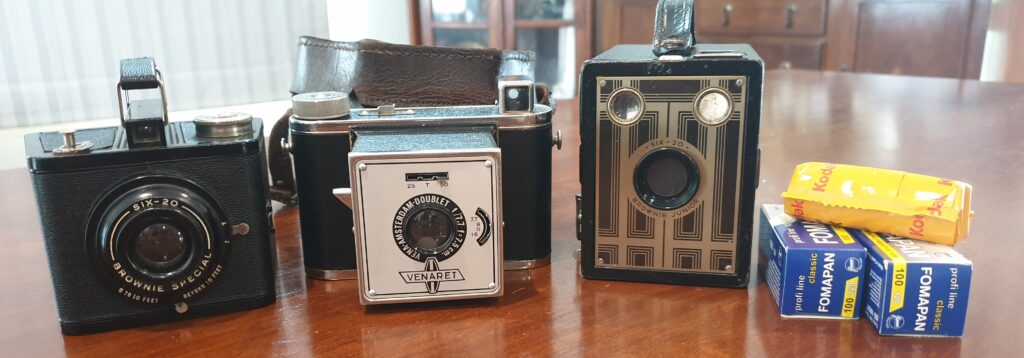
The Kodak Six-20 Brownie Junior (first on the left in the picture above) is one of three box cameras I tested together under the same conditions. The other two cameras being a Kodak Six-20 Brownie Junior and a Vena Venaret Junior. This camera takes 620 film, so I respooled Fomapan Profiline classic 100 120 film onto a 620 spool. The camera takes 8 images from a 120 roll of film. I prefer Fomapan 120 film as the numbers and lines on the backing paper are bigger and easier to read in these old cameras.
The Kodak Six-20 Junior Special is a small box camera from the 1930s . It has a trapezoidal body with a curved back, an optical viewfinder (Galilean) on top, and a fold-out foot on one side for standing the camera in portrait format, and a tripod socket. It was a popular camera designed by Walter Dorwin Teague, made completely from metal which made it virtually indestructable compared to its Bakelite counterparts. It’s wedge shape creates a curved film plane which reduces the vignetting and barrel distortion normally associated with a simple meniscus lens. It also made it more compact. The camera takes 6 x 8cm images.
There are two shutter speed options: instantaneous or timed. The instantaneous shutter speed is around 1/40. I use this chart I found on Art Deco Cameras to determine what conditions to use this camera in. The shutter release located on the top of the camera can be locked in order to avoid accidental exposures.
As the shutter speed is so slow, it is recommended to use a tripod, hold the camera against a wall, on a solid object, or firmly against your face to get shake free images.
The focussing is achieved by selecting one of the two zones : near focus – “5 to 10 feet” (1.5 – 3m) and far focus – “Beyond 10 feet” (3m+).
The camera measures approximately 13 x 10 x 12cm and weights just under 700g. There is a carry handle at the top. The optical viewfinder is very small and quite difficult to use.
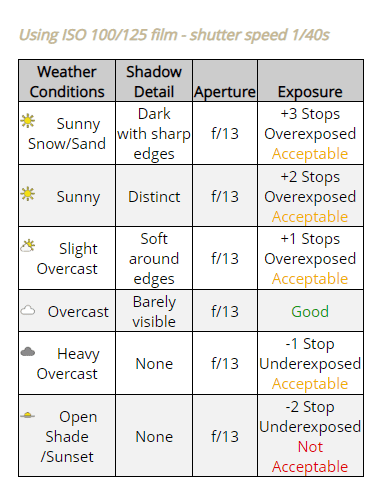
These photos were taken outside in bright sunshine using the instantaneous exposure option.
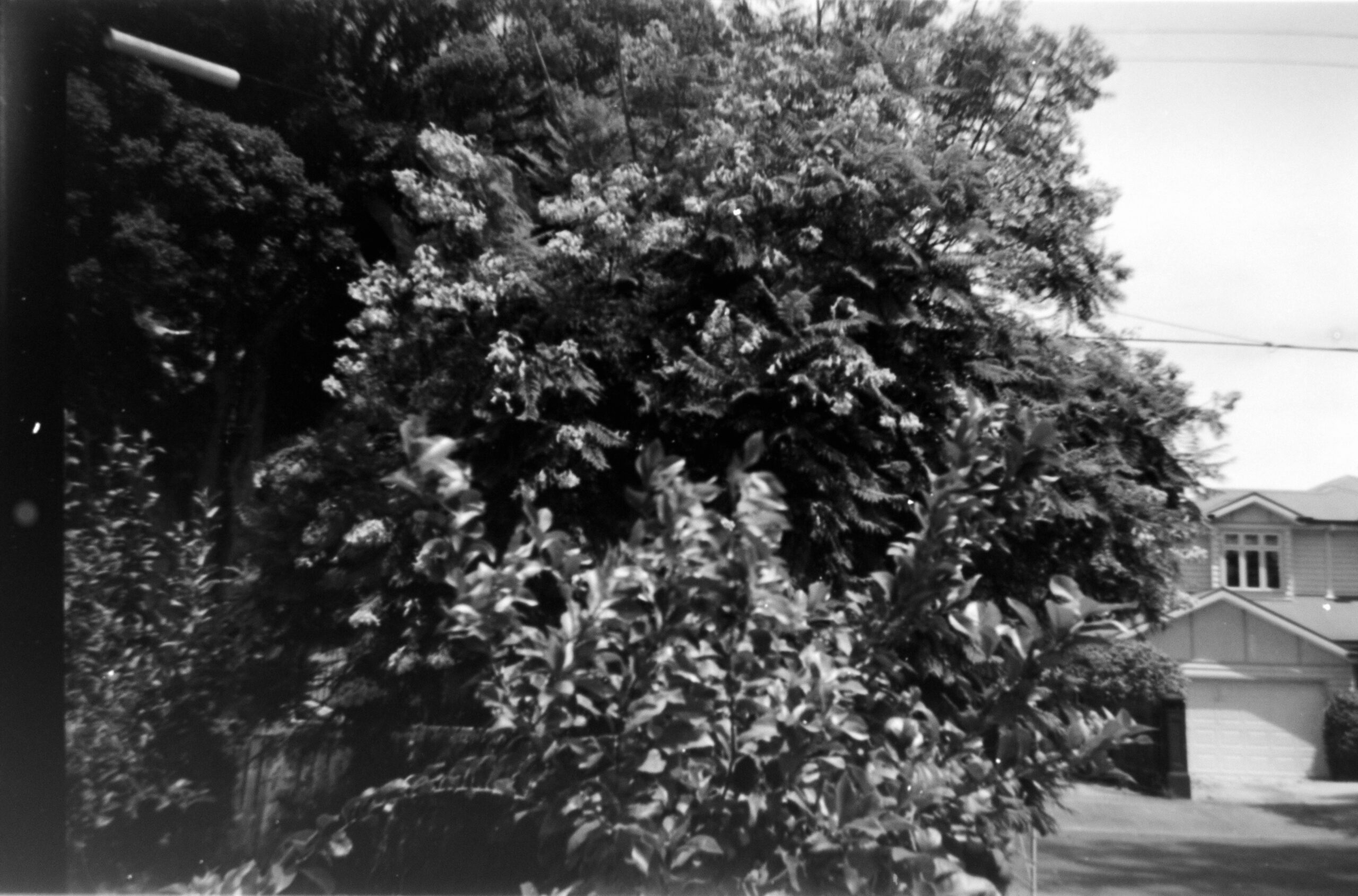
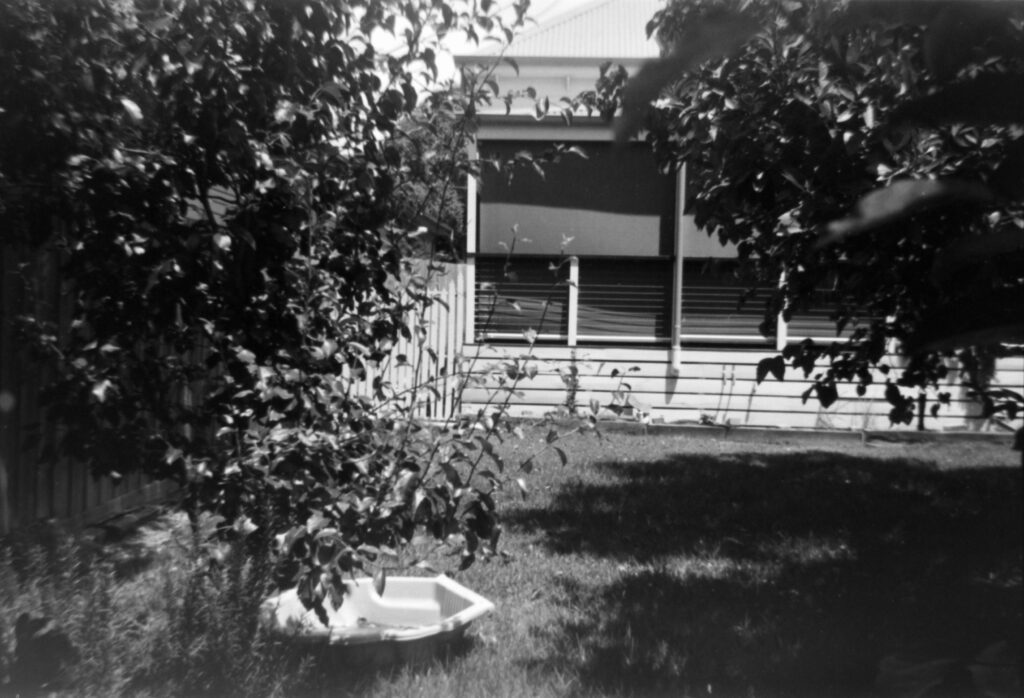
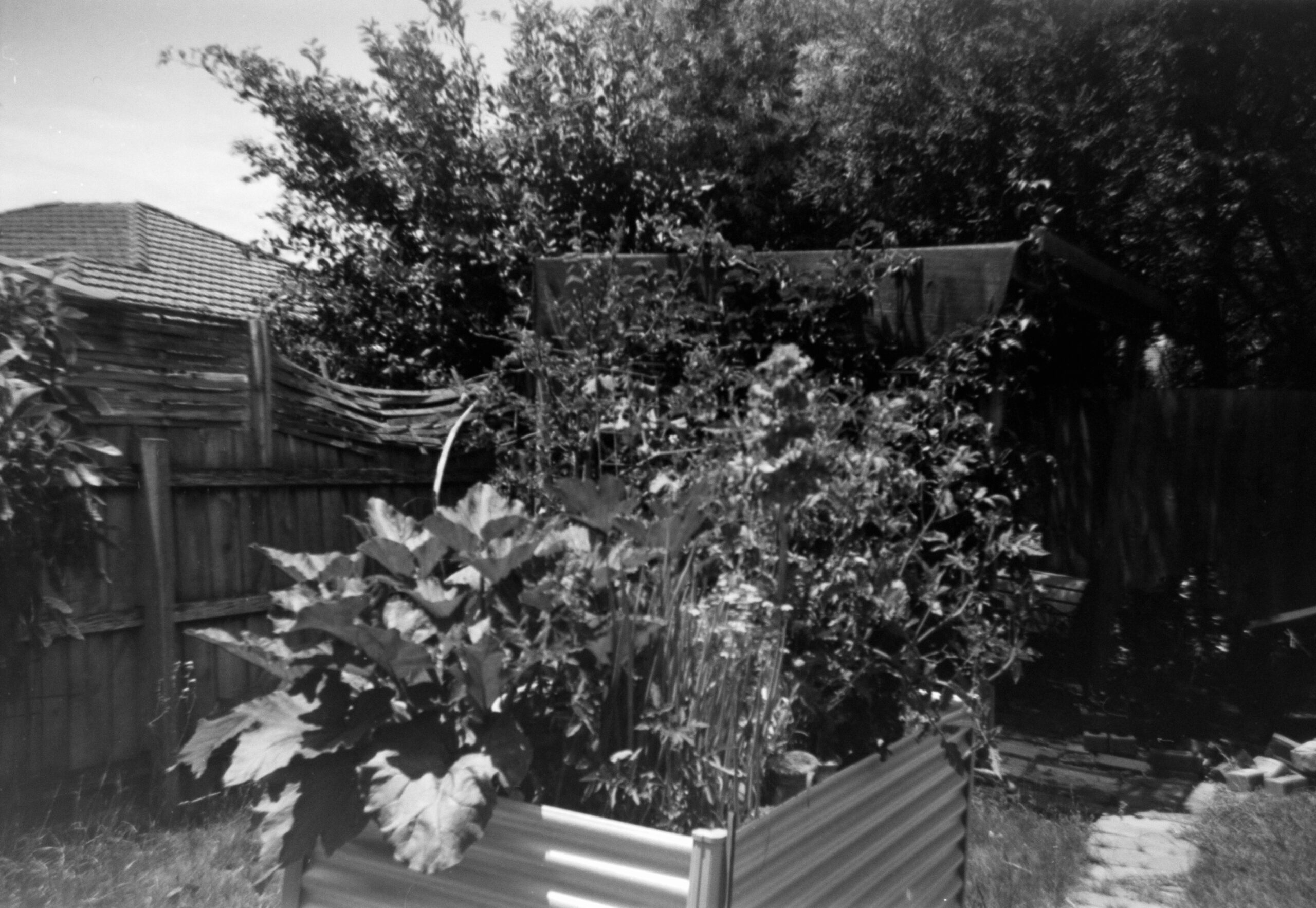
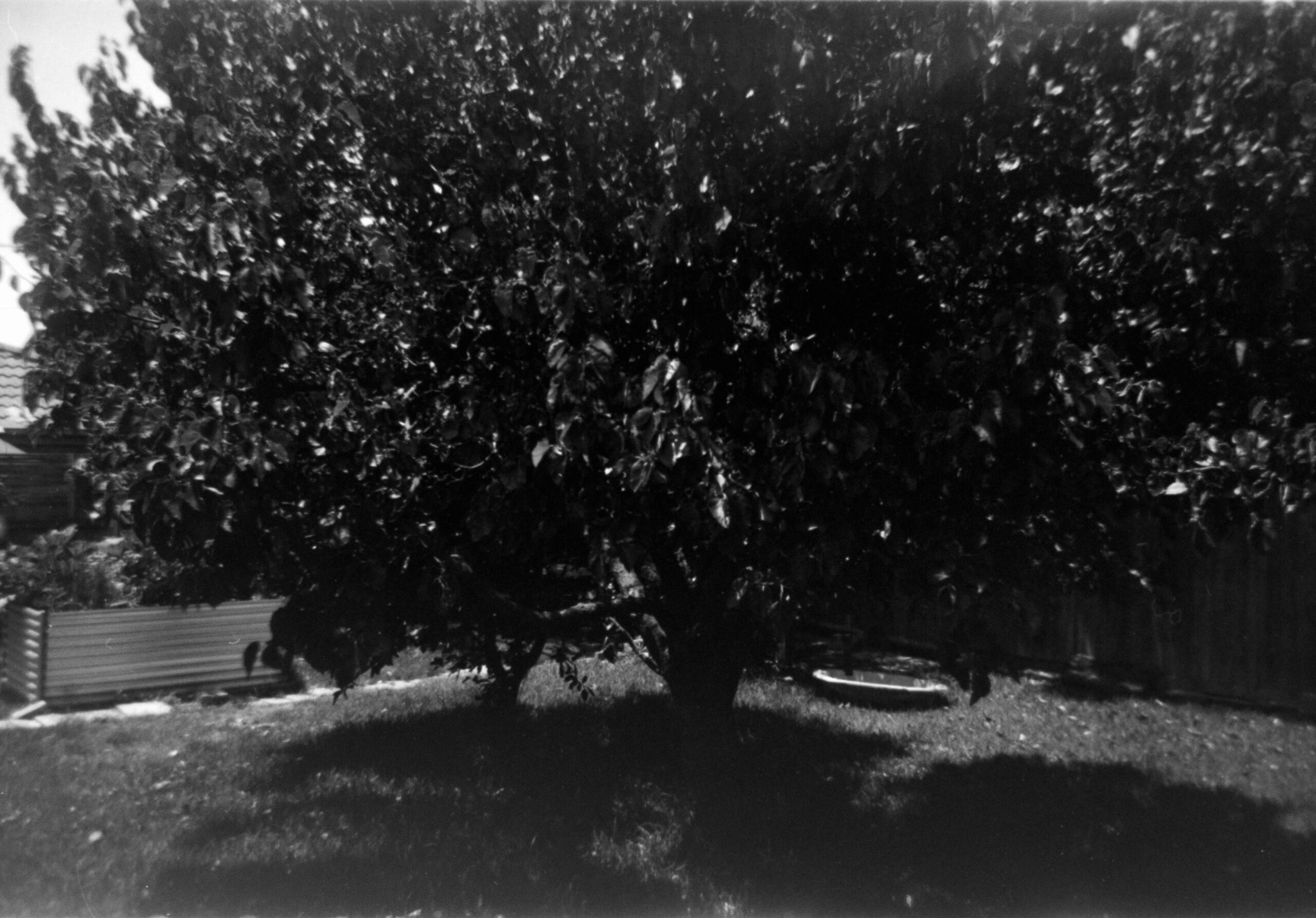
The negatives were developed by me at home using Cinestill Df96 Monobath, then digitised using a DSLR and converted with Negative Lab Pro.
Sources:

